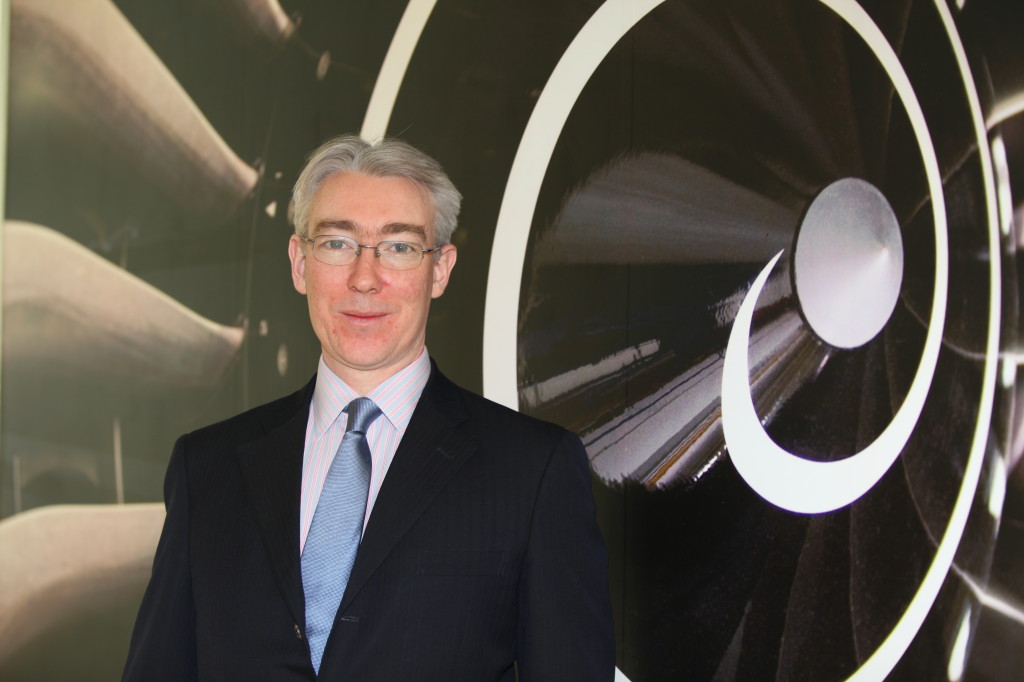Initially drawn by his curiosity Patrick Horgan first came to work in China in 1989 as a volunteer. He has been continuously dealing with China for the past 24 years, and for most of that time he has been living here too. He joined Rolls-Royce two years ago.
For 50 years Rolls-Royce has enjoyed a flourishing relationship with China, and Horgan says that this dynamic looks set to continue. Currently 50-60% of China’s wide-body airfleet — a core focus of Rolls-Royce — are powered by Rolls-Royce engines.
What has been the most significant change to the aerospace industry in China that you have witnessed?
The first flight I took in China was in 1989, between Chengdu and Kunming. At one point during the flight a chicken went running down the aisle. It was very clear that many people on the plane that day had never flown before. The development of the aerospace industry in the years since then can be seen as a fair reflection of the wider changes in Chinese society and the Chinese economy. There has been dramatic growth, transformation, modernisation and greatly increased connectivity with the rest of the world. However there is still a lot of growth to look forward to and areas where reform will be required in order to realise the growth potential.
What do you see as being some of the main challenges in China’s aerospace industry?
I think the main challenge for China is to manage growth while dealing with human resource constraints and structural impediments.
What do you see as being Rolls-Royce’s biggest achievement in China to date?
Our biggest achievement is the growth and diversification of our business in China since 1963. In addition to our aerospace business, we also have well-established marine, energy and civil nuclear businesses operating in China.
How many different kinds of aircraft does Rolls-Royce supply engines for in China?
Depending how you count, we supply engines for 10-15 different kinds of aircraft in China.
Does Rolls-Royce manufacture in China?
Yes, we manufacture engine components here, both in our joint venture in Xi’an and in a wholly owned facility, as well as sourcing components from Chinese suppliers. We also have a marine manufacturing facility in Shanghai and a large joint venture aero engine maintenance repair and overhaul facility in Hong Kong.
If so, are the engines manufactured here just for the Chinese market?
Our manufacturing in China feeds into our global supply chain. Final engine assembly work is mostly in the UK and at our new plant in Singapore.
Does Rolls-Royce have an R&D centre in China?
We have a research project running with the part of the Chinese Academy of Science, but no R&D centre.
Can you tell us about the importance of the Rolls-Royce training centres?
Training is a very important element of our relationship with our airline customers and China’s aerospace community and we have been running training programmes continuously for almost twenty years now, providing technical training to over 1,000 Chinese aero engineers and broader management training to more than 800 executives from the airlines, CAAC and others in the sector.
How important is it for Roll-Royce to focus on producing ‘cleaner’ engines?
Extremely important. In an industry where fuel consumption is a key concern and a major cost factor, working towards cleaner and more efficient power is an over-riding commercial priority. Each year we spend approximately GBP 1 billion on research and development, 75 per cent of which is on initiatives aimed at reducing emissions and improving efficiency. Innovation, to help our customers do more with less, is a key element of our corporate strategy.
Outside of engines, what other areas is Rolls-Royce involved in in China?
As mentioned earlier in the interview, we are active in Marine, Energy and Civil Nuclear. In Marine we supply a wide range of equipment and services for merchant vessels and specialised vessels for the off-shore oil and gas industry. In Energy our equipment is used on China’s West-East pipeline and in Civil Nuclear we have Rolls-Royce Instrumentation and Control equipment installed or on order for 33 nuclear reactors across China.
What are Rolls Royce’s future ambitions in China?
There is an exceptionally good fit between our products and services and China’s development needs over the next twenty years. Our ambition is simply to work closely and effectively with our Chinese customers and partners to ensure that we realise the full potential of that match in China’s demands and our capabilities.



Recent Comments